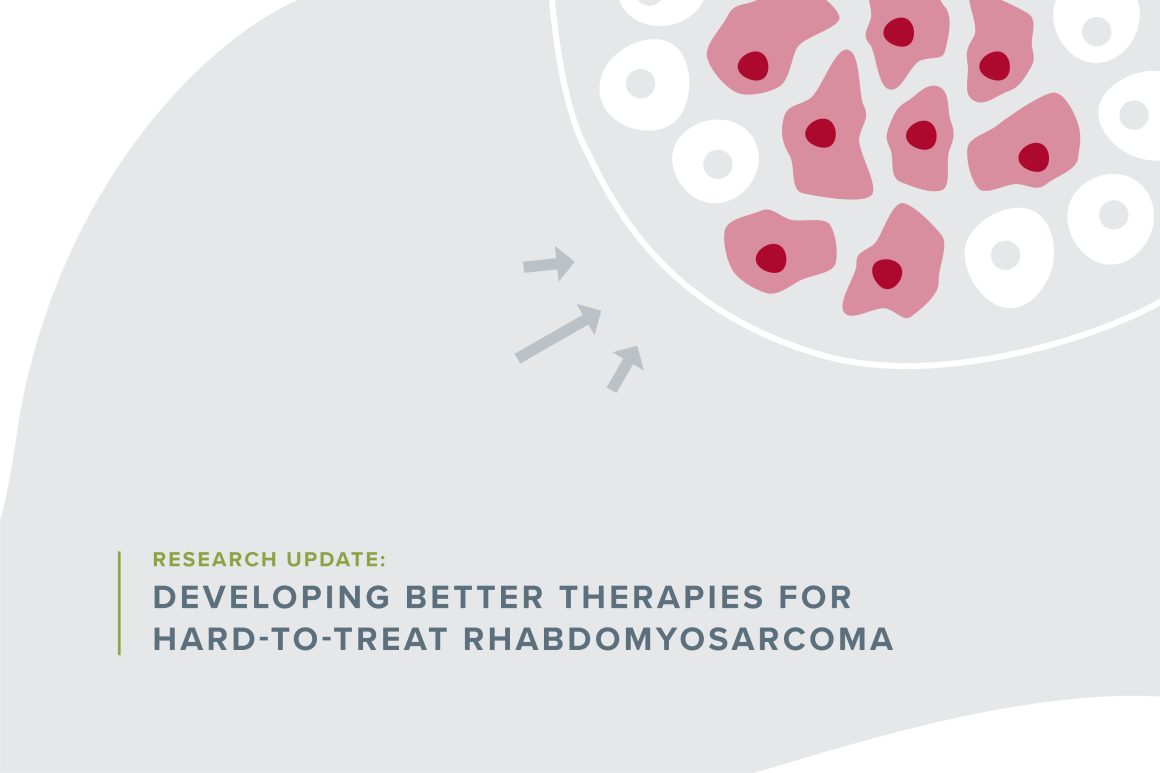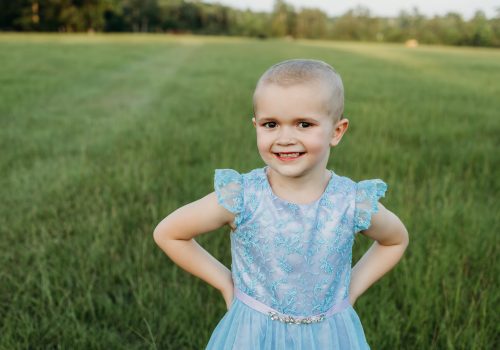Amit Sabnis, MD, still remembers one of the first patients he cared for as an oncology fellow. The young man survived rhabdomyosarcoma, a childhood muscle cancer. But that cure required high doses of radiation that later caused another sarcoma — one that eventually took the young man’s life.
“I think one of the great triumphs of pediatric oncology is the fact that we do cure our patients,” said Sabnis, an assistant professor at University of California San Francisco (UCSF) and a pediatric oncologist at UCSF Benioff Children’s Hospitals. “But I think being face to face with the cost of that cure was very sobering.”
With support from Children’s Cancer Research Fund (CCRF), Sabnis is working to find more effective and potentially less toxic treatments for hard-to-treat rhabdomyosarcoma.
“It is really a devastating disease,” he said. “We’ve known for a long time that there’s an astonishing diversity in subsets of rhabdomyosarcoma, and for better or for worse, we kind of treat them all the same. And as we started sequencing these tumors and asking, ‘What are the DNA changes that explain them?’, it became clear that it really was kind of crazy to be treating these tumors the same way.”
Understanding the most aggressive tumors
Sabnis is focused on rhabdomyosarcoma tumors with a particular genetic change — known as FOXO1 fusion — that makes them more aggressive and treatment-resistant. Of the 300 to 400 new rhabdomyosarcoma cases diagnosed each year, about one-third have the FOXO1 fusion gene, he noted. For patients with localized tumors, the chance of a cure is around 80% for those without FOXO1 fusion, compared to around 50% for those with the genetic change. And for patients with FOXO1 fusion whose cancer has metastasized, or spread, the chance of a cure falls to less than 10%.
“I have yet to see somebody who has truly been cured with metastatic, fusion-positive rhabdomyosarcoma,” Sabnis said. “And we’ve never really known how to how to exploit this genetic difference and make a change for these patients.”
But Sabnis isn’t giving up. His lab’s prior work showed that fusion-positive rhabdomyosarcoma relies on a protein called mTOR to grow. A clinical trial showed that an mTOR inhibitor slowed tumor growth in patients with rhabdomyosarcoma, but it didn’t lead to significant improvements for patients across the board. However, Sabnis thinks this approach — with refinements — could transform outcomes for patients with FOXO1 fusion.
With grant support from CCRF, he is pursuing three research goals: testing a better mTOR inhibitor, exploring a biomarker to identify tumors that would be especially sensitive to an inhibitor, and screening drug combinations to make the inhibitor even better at fighting this deadly disease.
Making tumors disappear and self-destruct
Sabnis is excited about his early results testing a more effective mTOR inhibitor, known as RMC-6272, that was developed based on work by his colleagues at UCSF. “We saw really spectacular results,” he said. “This drug had very, very strong effects in FOXO1 fusion-positive rhabdomyosarcoma models. As a single agent, it actually could make the tumors completely disappear."
Targeting the treatment to the right patients is key. Sabnis is testing a protein called SESN1 — which seems to be important in both FOXO1 fusion tumors and mTOR signaling — to see if could be used as a biomarker to identify which patients would benefit most from RMC-6272.
Sabnis is also working with UCSF’s Small Molecule Discovery Center to test RMC-6272 with approximately 2,000 other targeted therapies, hoping to find a winning combination that gets tumor cells to self-destruct.
“Cellular suicide is a hallmark of effective cancer therapy, so these combinations may be the key to the best treatments,” he noted. He hopes to have a pediatric clinical trial ready within two years, and he is already in discussions with pharmaceutical industry partners to work toward that goal.
Sabnis’s research could also lay important groundwork for other types of childhood cancer. “mTOR is clearly important in other contexts,” he said. “Big organizations like the Children’s Oncology Group have tested mTOR inhibitors in almost every cancer you can think of. But again, maybe not the right inhibitor, maybe not the right set of patients.”
Researchers could also test SESN1 as a biomarker for other cancers that might respond well to RMC-6272 and use the same approach to explore other types of fusions associated with aggressive cancers.
The power of philanthropy
Early philanthropic support is vital to advance a promising idea from the lab to a pharmaceutical industry partner who can bring a new product to market, Sabnis noted. “They want to see some really compelling data before they think about moving agents into the clinic,” he said. “Those are expensive experiments to do, and they take a lot of time and a lot of planning. So the CCRF funding really gave us the runway to launch this idea.”
Philanthropy is also essential to bring new treatment options to small subsets of patients who don’t always receive the same amount of research attention — like those with FOXO1 fusion-positive rhabdomyosarcoma. “I think organizations like CCRF are much more likely to recognize that the stories of those 100 patients are really important and really need to be supported by the best possible science in order to move that wheel forward,” Sabnis said. “This project simply wouldn’t exist without this level of support. So I’m just very, very grateful, both to CCRF and to all the donors that they’ve been able to bring on board into this fight.”
Your donation funds scientists like Sabnis.
Your support propels bold ideas forward and empowers researchers to discover treatments that are better and safer for kids, and ensure every child can have a long, healthy life after cancer.




